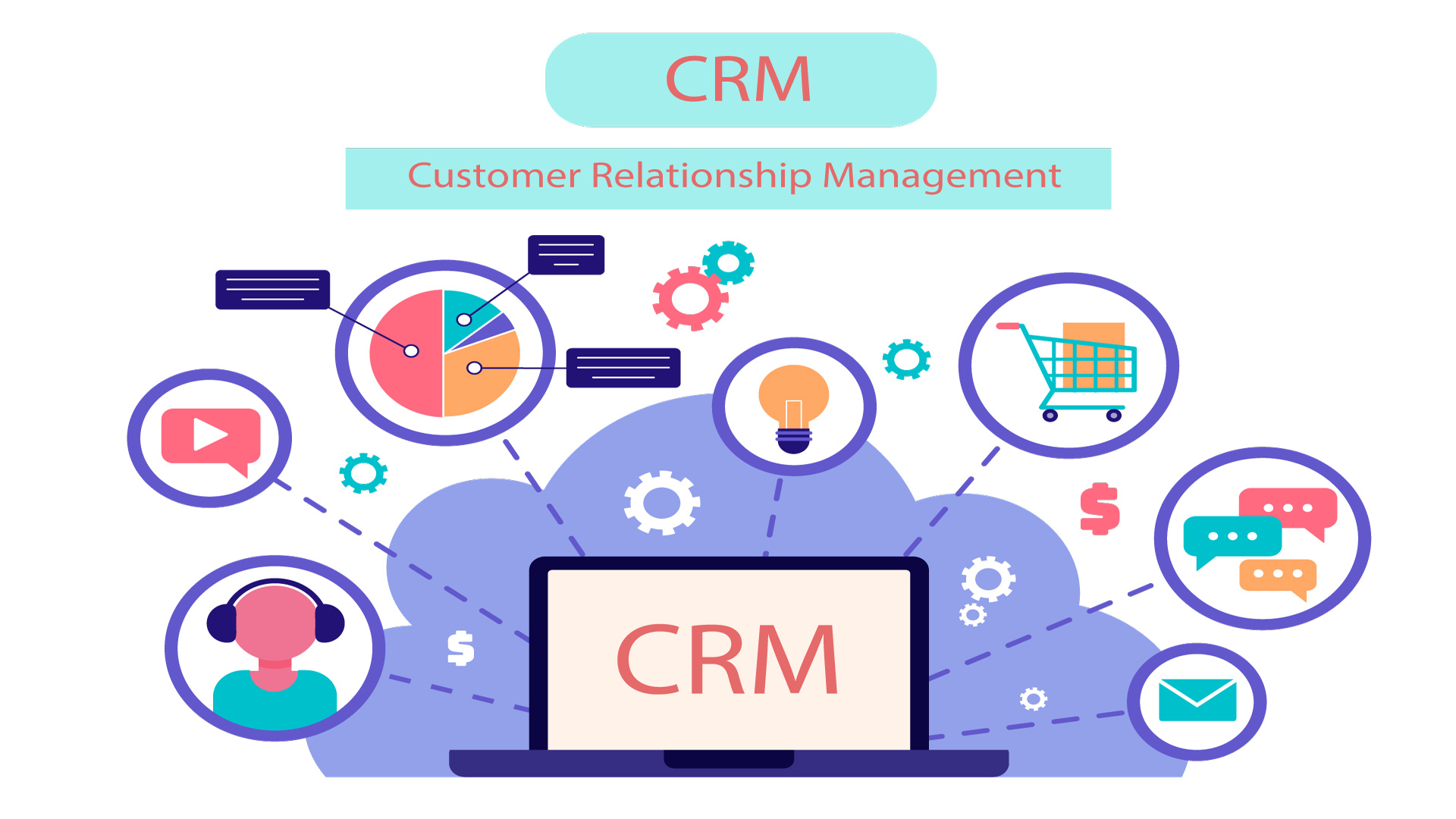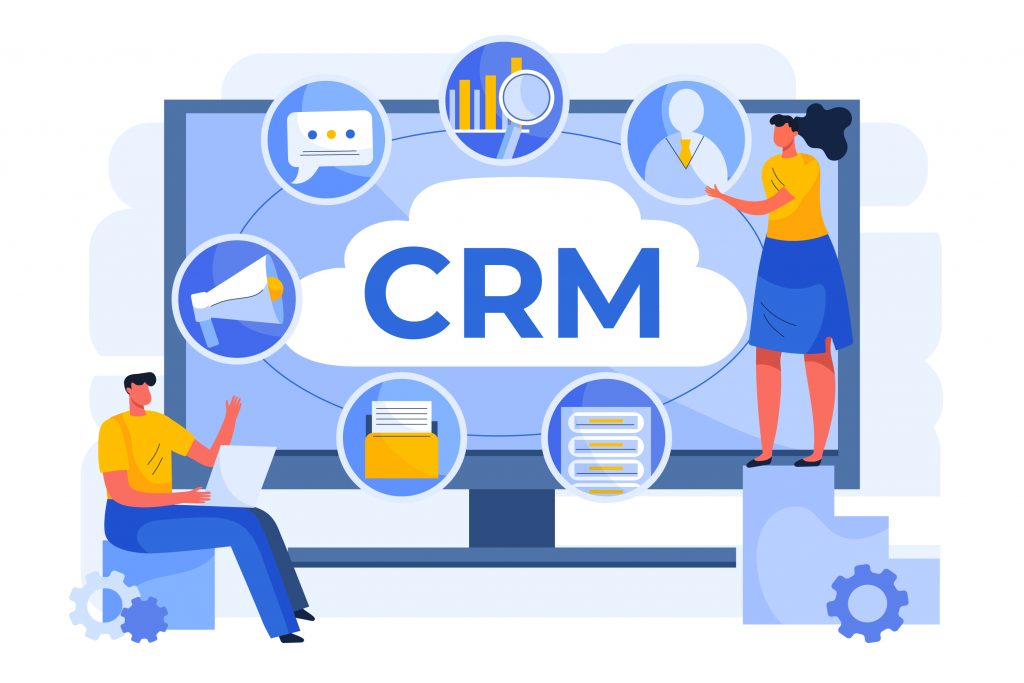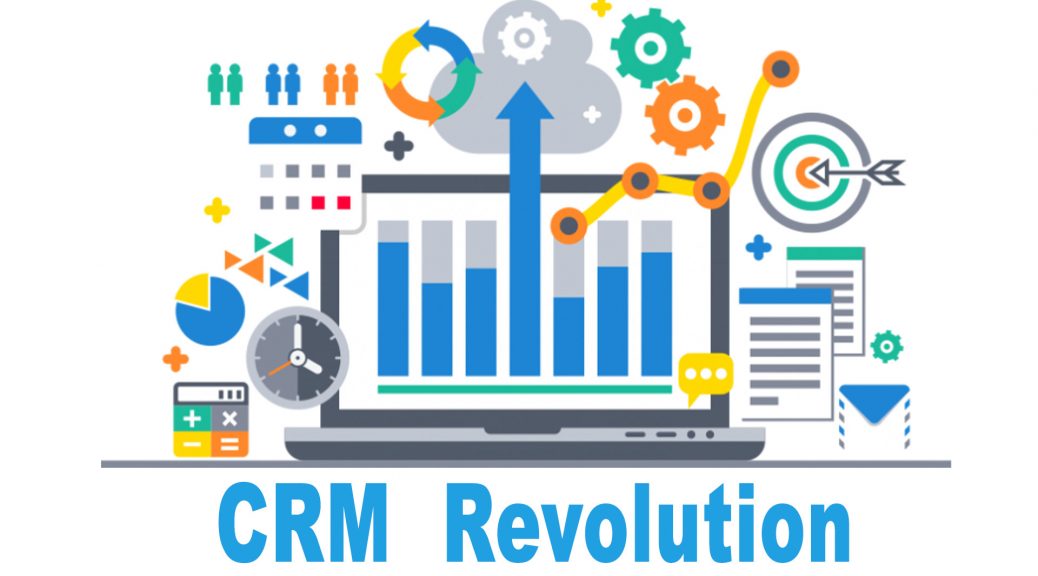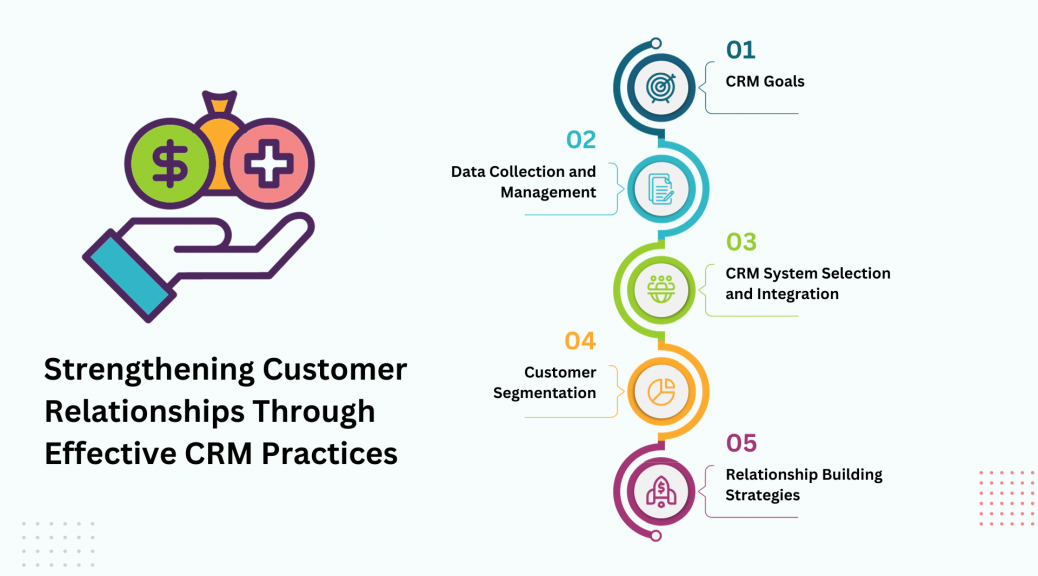As the owner of a small business, you have a variety of duties. One of the largest is acquiring new customers, commonly referred to as marketing. For contractors and construction professionals, PnaPna all-in-one CRM solution helps streamline this process with specialized tools for lead tracking and customer management.
Moreover, with the appropriate tools and procedures, not only will you broaden your lead and customer bases, but you’ll also be able to assess your marketing return on investment (ROI) and precisely identify where your marketing budget is being utilized most effectively.
Marketing often involves significant experimentation, especially during the initial phases of running your business. All your efforts will contribute to understanding how to best engage potential customers and promote your goods and services.
This guide will assist you in evaluating your current marketing approach and refining your campaigns.
Let’s begin.
Table of Contents
- Understanding Small Business Marketing
- Fundamentals of Small Business Marketing: Tools and Technology
- Preparing to Promote Your Small Business
- An Overview of Marketing Channels and Tactics
- Managing Your Marketing: Handle It Internally, Engage a Consultant, or Employ an Agency?
- 5 Frequently Asked Questions Regarding Small Business Marketing.
Understanding Small Business Marketing

You’ve established your small business operations. It’s now time to attract more targeted, paying clients. Where should you begin?
Welcome to the marketing landscape.
Marketing for small businesses entails placing yourself in front of possible users or clients. For contractors, this means effectively managing your leads and timelines.PnaPna lead management system helps you track potential clients from initial contact through project completion, ensuring no opportunity slips through the cracks.
There are numerous paid and organic marketing strategies available to connect with individuals who are interested in your services or products. With PnaPnaTech customer management tools you can organize your client information, track interaction, and maintain detailed project histories making it easier to provide personalized service and generate referrals.
Fundamentals of Small Business Marketing: Tools and Technology

Depending on the scale and reach of your small business, some of the following tools may be essential while others might simply be a beneficial addition to your marketing strategy. Nonetheless, these tools and technologies are highly recommended and will assist you in getting started.
CRM System
A customer relationship management (CRM) system enables you to consolidate potential and existing customer information in one location. https://pnapna.com/en/page/project-manager PnaPna contractor-focused CRM goes beyond basic contact management, offering comprehensive project management tools that help you track timelines, manage resources, and coordinate team activities . This integrated approach ensures that your marketing efforts align seamlessly with project execution.
With a CRM platform, you can uncover actionable insights about your users, monitor interactions with them, and oversee the entire customer journey, which allows you to better customize your marketing efforts.
Digital Marketing Tools
E-mail marketing platform PnaPna Tech built-in communication tools allow you to manage and create and manage email campaigns, send automated follow-ups, and maintain consistent client communication throughout project lifecycles. You can store your email lists and send targeted messages based on project types and client preferences.
SMS marketing platform — This service can function as a standalone product or as part of a larger email marketing platform. Marketing through short message service, known as SMS or text messaging, is an effective means of reaching users; consider how many people own smartphones and carry them everywhere. Companies can utilize SMS marketing to convey flash deals, new products, and more to customers who opt-in to receive these messages.
Social media marketing platform — Marketers utilize this software to oversee their social media activities. It assists them in engaging with their audience, expanding their follower base, and scheduling messages on social media platforms. They can also gather vital details and data, analyzing metrics about their audience, which can then inform decisions about what and when to post. Moreover, social media listening tools allow businesses to monitor discussions related to their industry and brand on social media, enabling them to engage with users.
Influencer marketing platform — This relatively new platform is intended to assist businesses in creating influencer marketing campaigns. Marketers use this software to find both micro (niche) and macro (general) social media and video influencers who can aid in promoting a product, launching campaigns, and monitoring return on investment (ROI).
Market Research
Conducting market research is essential for your small business and doesn’t necessarily need to be expensive. Prior to investing significantly in any marketing strategy, it’s important to explore everything, including your target audience and the competition. Establish a budget, decide on the data you want to gather, and consider the methods of collection.
Google Analytics
Integrate your analytics with PnaPna Tech reporting dashboard to gain comprehensive insights into your marketing performance, project profitability, and customer engagement metrics. Google Analytics monitors various website visitor statistics and produces regular reports to assist marketers in making informed decisions about their website’s performance. With this tool, you can analyze visitor demographics, geographic locations, and even the age and devices used to access your site. Additionally, you’ll discover which pieces of content and specific pages attract the most (or fewest) views, how long visitors linger on a page, conversion rates, and more. In simple terms, Google Analytics holds a wealth of data, and SEO experts can transform this information into practical insights.
The best part? It’s completely free! To begin:
- Set up a Google Analytics account.
- Configure the property you wish to monitor, meaning your business website.
- Integrate the tracking code into your site.
After setting up your account and ensuring everything is tracking correctly, expect to see data in your Google Analytics account within 24 to 48 hours. You’ll gain access to a comprehensive overview of your website visitors and how well your content and pages are performing. You can explore more thoroughly by monitoring particular data points and tailoring reports to your needs.
This tutorial offers a detailed step-by-step guide on the setup process. Additionally, you can connect Google Analytics with your PnaPna TECH account for enhanced prospect and client insights.
Google Analytics is an indispensable tool, as 99% of marketers are projected to utilize their company website as a marketing channel for prospects and customers within the next year.
Content Calendar
A content calendar serves as a centralized hub where you can outline your company’s scheduled content. This can encompass blog posts, YouTube videos, social media updates — any marketing materials and content your business is generating and intends to release during a specific timeframe.
You can utilize a shared online calendar or a spreadsheet with monthly tabs along with project management software to track each content piece. In spreadsheets, you can detail every task for each project, from preproduction to promotion, assign responsibility for each component, and manage deadlines.
For example, if you’re planning a blog post for Father’s Day, a potential sequence of tasks on your content calendar might look like this:
- Enter the blog post’s title on its intended publish date in the company calendar.
- Add it to your project management tool as a project.
- Within each task, outline individual items — drafting the blog post, sourcing images, preparing social media copy, etc. — needed to complete the post and specify due dates.
- Assign team members responsible for various aspects of the project, which may include the writer, editor, graphic designer, SEO specialist, and social media manager.
- Check off each task as it gets completed or establish a color-coding system for each step in the workflow.
Maintain regular communication with team members to ensure the content and its deadlines are met. Be open to adjusting the process; if you’re starting with a lean content operation, an online calendar showcasing publication dates may be enough to begin with.
Preparing to Promote Your Small Business

Before you start promoting your business, it’s essential to outline some key aspects.
Identify Your Value Proposition, Audience, and Goals
To successfully market your product, it’s crucial to understand your target audience and the message you want to convey.
Clarify your value proposition — Provide potential customers with a strong reason to buy from you. Focus on the benefits rather than the features, and ensure your offering aligns with their values and fulfills their needs. As you develop your unique value proposition, gather feedback frequently. This input can later be transformed into content like case studies and testimonials for your website. Remember, 68% of business buyers anticipate that sales representatives will offer solutions rather than simply selling products.
Define your audience — Determine who your ideal client is. Start by asking essential questions. What are their age and income levels? Where do they reside? What challenges do they face? In what way does your product or service meet their requirements? Be as detailed as possible in defining and understanding your target market. Once you have a clearer picture of whom you’re marketing to, you can craft targeted marketing strategies and outline your customer journey.
Establish goals — You need objectives to aim for and evaluate your progress against. By creating SMART (Specific, Measurable, Achievable, Relevant, Time-based) goals, you can effectively track your advancements and make adjustments as necessary. Monitor this data and refer back to it when needed.
Secure Your Brand Messaging Framework
Your messaging needs to be memorable to help customers recall your brand and encourage repeat purchases. Although you can explore this in great detail, these four frameworks provide a solid starting point for crafting brand messaging that connects with your audience.
Brand promise — This statement establishes the expectations your customers will have for your company. It should be clear and straightforward, typically limited to one or two sentences.
Positioning statement — This statement focuses on your specific offerings, target demographic, and your place in the market. Similar to your brand promise, your positioning statement should be brief and to the point. For example, “We provide X for Y audience and achieve Z outcomes.” A positioning statement is particularly beneficial when developing your internal and external communication guidelines.
Brand mission — Building on the previous statements and your value proposition, use the brand mission statement to elaborate on your fundamental beliefs, the objectives you wish to achieve, and your strategies for reaching those goals.
Brand voice and tone — After identifying your audience and market, determine the most effective way to communicate with them. Decide on the voice and tone that will resonate with your business and its industry. For instance, can you adopt a playful style in your messages, or would that harm your brand? Experiment with this and weave in your brand’s personality—see what resonates.
Establish and Launch Your Website
Fortunately, you have various options available when it comes to creating your website. While some entrepreneurs invest heavily in their web presence, it’s entirely possible to get started without overspending.
Website
Even if you’re not creating an online store, having a web presence is essential for ensuring potential customers can search for and find you. At the very least, you can share your company’s background, contact details, and business hours.
Register a domain name— Aim for your business name with a “.com” domain if available. If they’re already taken, consider shorter names that are easy to spell and recall. If “.com” isn’t an option, look to secure “.co” or “.net.” It’s wise to set up auto-renewal to prevent your domain ownership from expiring, as many domain registrars offer this feature during the checkout process.
Get hosting — After securing your domain, you’ll need to buy a hosting package to make it accessible online. Typically, you can pay for a year or more in advance and opt for upgrades like a business email with your domain, website themes, and other features.
Design your site — Once you’ve obtained your domain and hosting, it’s time to focus on design. You can choose a template, design it yourself, or hire a professional or agency for assistance. Ensure it’s optimized for mobile devices—most templates naturally accommodate this—and follow design best practices, steering clear of harsh font pairings and overly bright colors. An important step often missed is ensuring your website complies with ADA standards, allowing it to be accessible to everyone. You can also generate anticipation for your launch by adding a basic “Coming Soon” message to your site.
Logo
A logo serves as the visual representation, graphic, or stylized text of your business name. You can design this in-house or enlist the help of a professional or company. Once created, utilize your logo across your website, social media, and various business and marketing materials, including e-books and invoices.
Content and SEO
Crafting a content and SEO strategy will assist potential clients in discovering you, your offerings, and your industry. Implementing strong SEO techniques—like selecting relevant, high-traffic keywords, delivering valuable content, and acquiring backlinks from reputable websites—will also enhance your content’s visibility on search engine result pages (SERPs).
Establish a content and publishing strategy — Before promoting your site, be sure to add foundational pages such as “About Us,” “Services/Product Categories,” “Contact,” and others. Allocate time to develop your copy fully. For example, creating four or five blog posts is a good start. This will strengthen your SEO efforts and keep visitors engaged longer by providing them with more content instead of simply seeing one post and leaving your website.
Promote your content — Once your content is published, your job isn’t finished. Distribute your content across various channels and tailor messaging and visuals to each platform to maximize reach.
When implemented effectively, your content and SEO strategy can boost your rankings in SERPs. Research from SISTRIX indicates that the first result on the first page attracts roughly 29% of user clicks, the second gets 16%, the third receives 11%, and the percentages decline steeply from there.
An Overview of Marketing Channels and Tactics

Every small business proprietor should recognize that opportunities are available, even if they aren’t immediately acted upon. From various content platforms to business networks, here’s a summary of important marketing tools.
Readable Content
Articles — This content encompasses original studies, facts, and statistics and may feature interviews with, or be written by, experts in the field.
Blog posts — These are often synonymous with articles but tend to be more opinionated and directly address a company’s products and services.
E-books — This type of content is longer than the previous formats. While there isn’t a strict guideline, aiming for over 2,000 words is advisable, as e-books deliver more comprehensive information and often contain original research. These are digital-exclusive products and may be gated, meaning interested readers must pay or provide an email to access them.
White papers — Similar to e-books, these are typically gated and are considered authoritative and extensively researched on a specific topic or industry trend.
Landing pages — Known as lead capture pages, these are specific sections of your website aimed at encouraging visitors to take a particular action. For instance, the call-to-action button may prompt users to enroll in a program or purchase a product. Landing pages are frequently associated with targeted marketing efforts, especially when linked to email marketing campaigns.
Visuals and Visual Content
Infographics — These visuals often feature original illustrations and research, or the creator gathers and references data from credible sources. Including your logo on an infographic is advisable, and providing the HTML for others to embed it on their own sites is an excellent method for generating backlinks.
Photo — This could involve a product image, user-created photo, or another type of picture designed to grab a user’s attention and interest. These visuals can also be utilized in your email and social media campaigns if you adjust the resolution and dimensions. Various editing tools are available to enhance the sharpness of your images.
Videos — Depending on the video type you create (for instance, behind-the-scenes footage of your office or demonstrations of a new product), you can film videos using a smartphone or collaborate with a team and utilize more advanced equipment.
Webinars — Also referred to as video conferences. You can organize or co-organize a webinar to engage multiple audiences and disseminate information. Companies often provide a unique, limited-time offer to attendees.
Podcasts — These audio episodes can be downloaded or streamed online. Podcasts can vary in length, focus, and often include guests and experts in their respective fields.
Online Marketing Activities
Search engine optimization (SEO) — We’ve emphasized this previously, but it’s worth reiterating: an effective SEO strategy is essential. You can tackle it independently, employ an in-house specialist, or partner with an external expert to enhance your online visibility.
Google Business Profile — This complimentary tool enables businesses to oversee their online presence on Google. You can share your location and operating hours, upload images, respond to customer reviews, and much more through the Google Business Profile platform.
Remarketing and retargeting — Both are forms of behavioral marketing that utilize customer-tracking data. With remarketing, you can reach out to potential customers via email—like reminding them about a product they left in their shopping cart. Retargeting involves serving ads to individuals who visited your site but left without making a purchase, such as someone researching marathons who sees running shoe ads later on.
Email marketing — This channel effectively connects with your audience, particularly due to its remarkable return on investment. In fact, email remains the top preferred communication method among customers when engaging with companies. Learn how to develop an email marketing strategy from the ground up to better address your audience’s needs. You wouldn’t want to offer the same content to occasional buyers and loyal customers, and a well-crafted email strategy can enhance sales.
Social media marketing — This is a widely used method for engaging with your audience, promoting your products, and expanding your market presence. You can utilize both organic and paid social media posts to reach both new and current users.
Influencer marketing — Influencers, even those with just a few thousand followers (micro-influencers), can promote your brand to their engaged audience in exchange for a fee, a complimentary product, or a share of your sales.
Search engine marketing (SEM) — This online advertising approach enhances your visibility on search engine results pages (SERPs) for a cost. Businesses using pay-per-click (PPC) advertisements incur a fee each time a user clicks on their ad. PPC ads can help companies break through the noise, distinguish themselves, and gain an advantage over their competitors, particularly in the discovery phase.
Offline Marketing Activities
Direct mail — Use PnaPna document management system to create and track marketing materials, proposal and customer communication ensuring consistent branding across all channels. You can also advertise your business through physical mail sent to residences or other businesses, such as postcards, coupon booklets, and catalogs.
In-person events — These can range from gatherings held in a conference center to sponsored events at local bookstores aimed at boosting business.
Retail spaces — Small businesses engaging in sales via e-commerce and physical stores can leverage both methods to attract customers and enhance sales.PnaPna task management features help you coordinate marketing activities across multiple locations while maintaining organized workflow and team collaboration. Additionally, in-person surveys and kiosks can assist in collecting both qualitative and quantitative data. Tools like the PnaPnaTech CRM platform can help organize your lead and customer information, allowing you to create comprehensive customer profiles, track purchase and interaction histories, and enhance personalized shopping experiences.
Marketing Activities for Building Relationships
Business associations—commonly referred to as trade associations—are organizations that consist of business owners from a specific industry and can offer support and resources. Membership usually requires payment of dues, and members often receive benefits such as discounts on continuing education or business insurance.
Chamber of Commerce—this is a local organization dedicated to promoting the business community. Similar to business associations, becoming a member typically provides access to resources, events, and additional advantages.
Rotary Club—an international organization that unites business and professional leaders for humanitarian initiatives.
These represent just a few approaches to connect with your audience.
Additional opportunities for networking and fostering goodwill exist through charitable endeavors and sponsorships. Small businesses have multiple avenues and strategies for marketing their products and services to consumers. Leverage data, experiment with various methods, and strive to identify your company’s unique marketing formula.
Managing Your Marketing: Handle It Internally, Engage a Consultant, or Employ an Agency?

When considering your marketing strategy, reflect on these three questions:
- What objectives am I aiming to achieve?
- What is my financial limit?
- What challenges do I face or what areas fall outside my expertise?
PnaPna financial management tools can help you track marketing expenses monitor ROI and make data driven decisions about your marketing investments.
If a marketing budget is not in place, now is the moment to establish one. Align it with your marketing plan to better grasp your available resources and potential hires. Typically, advertising is the primary expenditure in the marketing budgets of both B2C and B2B companies, with technology following closely behind.
Your small business can operate within a limited marketing budget or a broader one; either way, you can effectively connect with leads and customers.
Five Frequently Asked Questions About Marketing for Small Businesses
Have queries? We’ve addressed five of the most common ones.
What type of marketing is most suitable for my small business?
PnaPna Tech reporting tools help you track which marketing channels generate the most leads and conversations allowing you to optimize your marketing strategy based on real data.
Conduct market research to gain clarity on your target demographic. While it’s beneficial to try out various marketing channels, be cautious about dedicating significant resources to platforms where your customers are not engaged. If your small business customer base from Gen Z prefers TikTok for entertainment, don’t invest heavily in local newspaper advertisements.
Ultimately, the most effective marketing approach is one that directly resonates with your audience, meets their needs and motivates them to make a purchase.
What are some promotional strategies for small enterprises? You could organize virtual or in-person gatherings or social media competitions where participants need to tag friends, follow your business account, and share it for additional entries. These represent just a few methods to broaden your audience and engage with your community.
Fortunately, there are plenty of tactics available for marketing your small enterprise.
How can I promote my small business?
There are numerous paid and free methods to advertise your small business. Depending on your target demographic, consider advertising in local newspapers and Facebook groups. If it helps you reach your audience, sponsoring local sports events or tournaments can be effective, and you can also leave flyers and business cards in spots like coffee shops with community bulletin boards.
How can I market my business without any expenditure?
SEO serves as a fantastic free or low-cost avenue. After all, you own your website, unlike hosting all your content on third-party platforms like Instagram or YouTube, which could disappear at any moment.
At a high level, you can craft content that appeals to both your customers and search engine algorithms through keyword research and optimal SEO practices. Although good SEO and content may require time to yield results, the investment is worthwhile.
Social media marketing is another widely-used choice. You can capture and upload business-related content directly from your smartphone. Utilize various channels that complement each other, such as creating a dedicated landing page specific to a particular Instagram post with a clear call to action.
What are some marketing approaches and trends for small businesses?
Customized, one-on-one (or 1-to-1) marketing is an excellent strategy. Regardless of whether you run a brick-and-mortar store or operate solely online, utilizing customer data to tailor experiences is an effective approach. This could involve something as straightforward as including a person’s name in email communications or more complex actions like suggesting products based on past purchases.
A survey of 1,000 adults indicated that 80% prefer personalized shopping experiences from retailers. On the other hand, customers might decide to look for alternatives if a business does not fulfill their expectations.In terms of small business marketing trends, digital marketing remains at the forefront.
In today’s day and age, successful marketing requires both strategy and proper tools. PnaPna complete contractor management solution provides the foundation you need to execute effective marketing campaigns while maintaining excellent customer relationships throughout every project phase.














